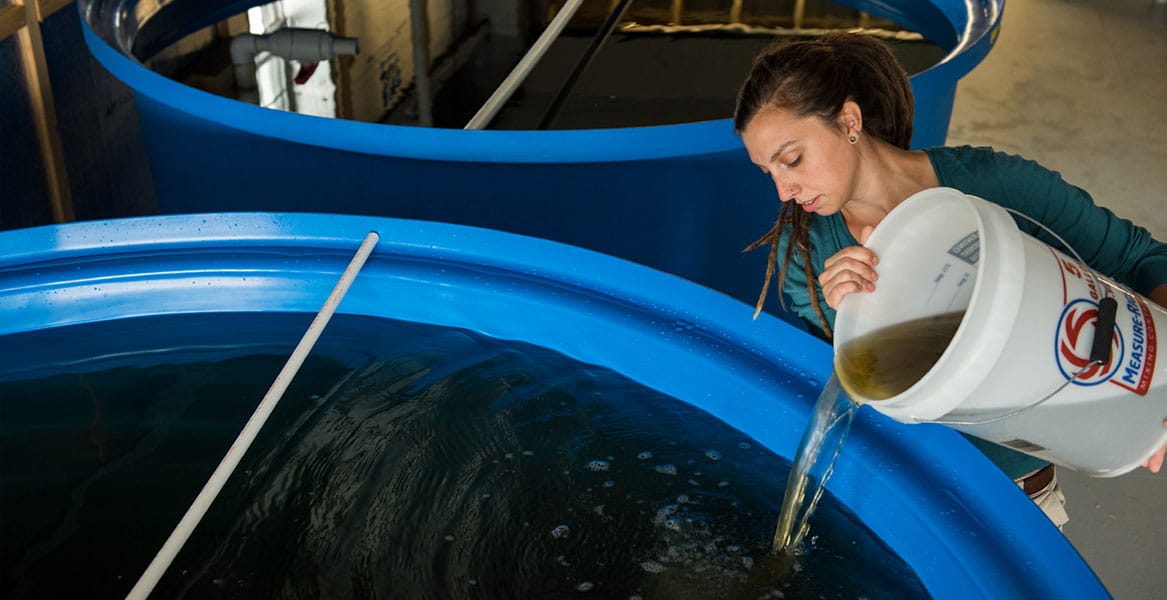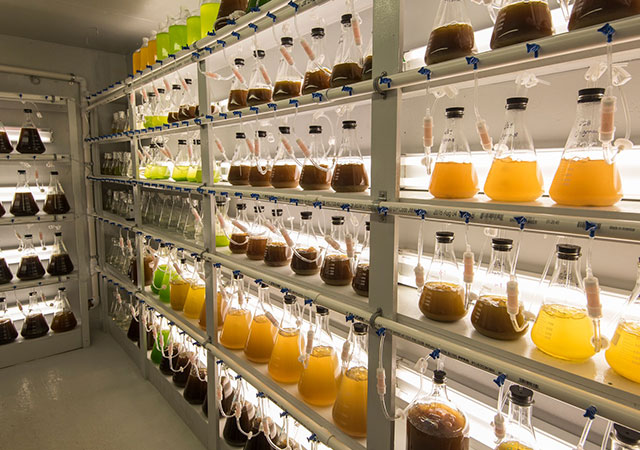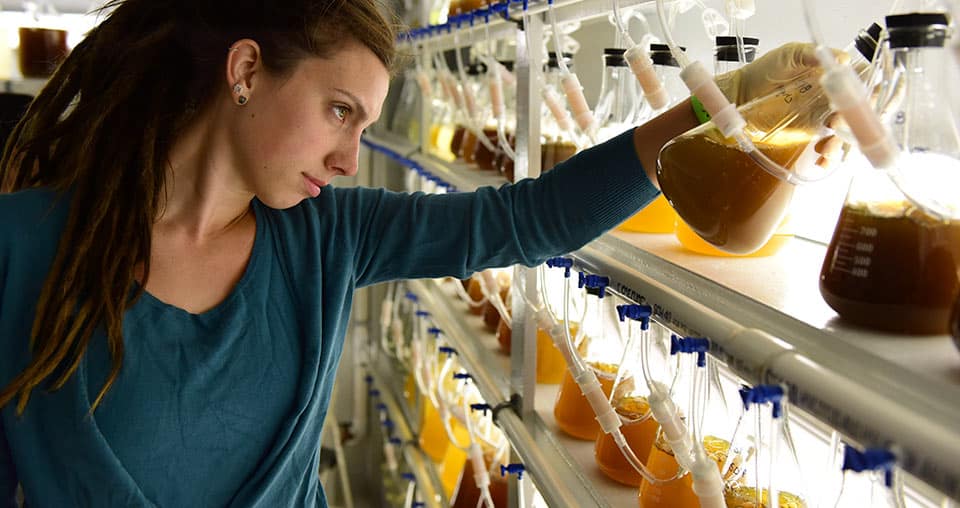While Hoopers Island Oyster Co. Nursery Manager Natalie Ruark was busy feeding algae to the brood stock at our Fishing Bay hatchery in south Dorchester County, we took a few minutes to ask her about this year’s breeding process and the outlook for seed production.

The hatcheries in Maryland and Virginia have not had a good start, but I’m optimistic that we will soon see some results here in Crocheron where salinity levels are little higher — 8 parts per thousand — than most areas of the middle Bay. We now have usable gametes and are in the spawning process, and I’m hopeful that within a week or two, our first larvae will move through the hatchery.
Why is everyone behind schedule?
Initial attempts at spawning in April and early May weren’t successful. We normally begin to condition brood stock in our tanks in early February with larvae production happening in late March and April. Conditioning is a process where we change the environment to encourage brood stock oysters to produce gametes (egg and sperm) earlier in the season than what would be natural. We do this by warming the temperature of the water and providing the oysters plenty of algae to create a “false spring” ahead of schedule. This lengthens the spawning season that naturally occurs in June and July. This process is under stress due to the influx of fresh water created by the abnormal amount of rainfall that has occurred over the last year. Ultimately, we’d like to see the salinity reach 13 parts per thousand.
Does all the rain have a long-term impact?
We don’t know at this point, but it is possible that the oysters in our brood stock are changing their circadian rhythm due to the prolonged decrease in salinity that is impacting how they naturally go through their lifestyle. So mitigation and problem solving has to occur first with the conditioning process at the hatchery. We’re taking what Mother Nature gives us and finding the best solution for our situation.
Is salinity the only issue?
There is not enough science to identify, exactly, what the problem may be. Water quality is also question due to nutrient run-off from the rains and dam releases at the Susquehanna at the top of the bay. When you talk to some of the watermen who were dredging for oysters in the wild population this winter, they said they were not seeing growth on the bill of the oysters. But there is not enough information to support this observation scientifically.
When will you begin filling orders for seed?
We hope to have seed from our 2019 production year available for sale by mid to late June. Our goal is make our customers whole who have ordered seed, then support our own inventory on the farm. Once those obligations are met, we can focus on providing spat for restoration purposes.

